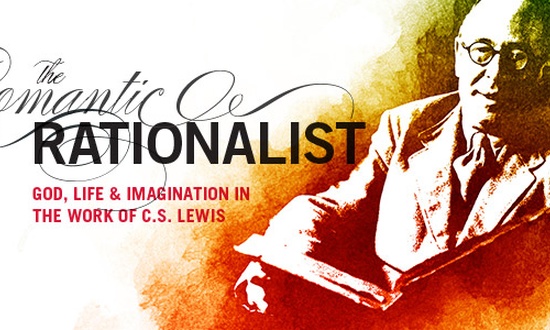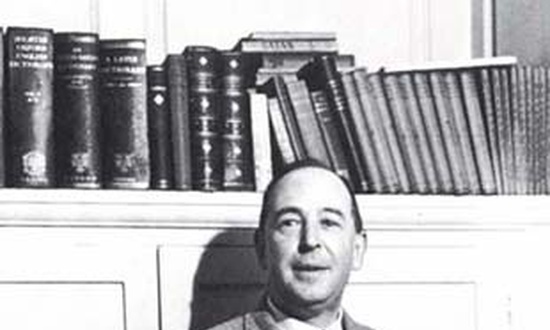In late May of 1988, when our daughters were seven and nine, Nanci and I and the girls were in England in the final week of a two month trip in which we’d visited missionaries in Egypt, Kenya, Greece and Austria (there was still an iron curtain then and a missionary friend and I crossed it to meet with pastors in Hungary).
My family and I spent the last 10 days of this trip in England. We visited Oxford, where I used some photos from one of the six Lewis biographies that I’d read (showing the view from his window of some stationery objects) to trace down Lewis’s office and rooms behind Magdalen College. It was in this room where he came to a belief in theism, then on Addison’s Walk outside the building, by Deer Park (which he saw through his back window), Lewis came to Christ. In this same room in years to come he wrote most of his books, including The Chronicles of Narnia.
So on that day we entered a particular door that seemed the right one, followed a written description of stairs and hallways, looking at posted numbers some of which had changed and some hadn’t. I knocked on a door I had deduced (and was praying) was the right one. A professor answered and I asked “Is this where C. S. Lewis lived?” In a very English way, with a hint of dismay and disapproval at this trespassing American and his little daughters, “Yes, but it’s been many years and it looks quite different now.”
We peeked in nonetheless, and I could see Lewis’s sitting room where he often meditated and wrote.
Lewis said in one of his letters:
“My big sitting room looks north and from it I can see nothing, not even a gable or a spire, to remind me that I am in town. I look down on a stretch of ground which passes into a grove of immemorial forest trees, at present coloured autumn red. Over it stray deer. They are erratic in their habits. Some mornings when I look out there will be half a dozen chewing the cud just underneath me.”
I videotaped the girls in the hallway outside Lewis’s door and the view from windows, at the front looking at the main college building and behind looking out on Deer Park, where to the girls’ delight we actually saw a deer.
Meanwhile, my wife Nanci and mother of those girls to whom I’d read The Chronicles of Narnia, was waiting outside the door at the bottom level near a sign that said admission was restricted to Oxford professors and students and those there for official purposes. Of course, I was a writer there for the official purpose of locating C. S. Lewis’s room, so I had no problem with this.
Regarding what happened at this place we visited that day, Lewis says in Surprised by Joy:
“You must picture me alone in that room in Magdalen, night after night, feeling, whenever my mind lifted even for a second from my work, the steady unrelenting approach of Him whom I so earnestly desired not to meet. That which I greatly feared had at last come upon me. In Trinity Term of 1929 I gave in and admitted that God was God, and knelt and prayed: perhaps that night, the most dejected and reluctant convert in all of England.”
He referred here to his conversion to theism.
Around that same Deer Park where we saw the deer through the window outside Lewis’s room, scrolls Addison’s Walk, where Lewis underwent his second conversion, this one not merely to theism but to Christ Himself. He had a long walk with two friends, one of whom was J. R. R. Tolkien (it was Lewis who beseeched the procrastinating perfectionist Tolkien to finish and publish Lord of the Rings and Tolkien once said that if not for Lewis he likely never would have).
In his letters to his friend Arthur Greeves, in the book now called They Stand Together, Lewis wrote:
“September 1931 He [Hugo Dyson] stayed the night with me in College...Tolkien came too, and did not leave till 3 in the morning...We began (in Addison’s Walk just after dinner) on metaphor and myth-interrupted by a rush of wind which came so suddenly on the still warm evening and sent so many leaves pattering down that we thought it was raining....
“We continued on Christianity: a good long satisfying talk in which I learned a lot....
“October 1931 Now what Dyson and Tolkien showed me was this: that if I met the idea of sacrifice in a Pagan story I didn’t mind it at all: and again, that if I met the idea of god sacrificing himself to himself.... I liked it very much...provided I met it anywhere except in the Gospels...Now the story of Christ is simply a true myth: a myth working on us in the same way as the others, but with tremendous difference that it really happened....Does this amount to a belief in Christianity? At any rate I am now certain (a) that this Christian story is to be approached, in a sense, as I approach the other myths; (b) that it is the most important and full of meaning. I am also nearly sure that it happened....”
Lewis wrote in Surprised by Joy of a trip riding in the sidecar of a motorcycle driven by his brother Warren, on a trip to the Whipsnade Zoo:
“When we set out I did not believe that Jesus Christ is the Son of God, and when we reached the zoo I did. Yet I had not exactly spent the journey in thought nor in great emotion. “Emotional” is perhaps the last word we can apply to some of the most important events. It was more like when a man, after long sleep, still lying motionless in bed, becomes aware that he is now awake.”
However, Lewis tied his conversion to Christ directly back to the talk with Dyson and Tolkien on Addison’s Walk. A few days after his trip to the zoo with Warren, Lewis closed out a letter to Arthur Greeves with this news:
“I have just passed on from believing in God to definitely believing in Christ-in Christianity. I will try to explain this another time. My long night talk with Dyson and Tolkien had a good deal to do with it.”
Lewis’s mentorship and impact on my own life, and indirectly on my ministry has been profound, and I’m grateful to God for him. Lewis is even one of the characters in my book Dominion. He’s in the present pre-resurrection Heaven, serving as a guide and consultant to a character who dies. And part of the story, including the very end, has another character reading The Chronicles of Narnia to his children, ending with my favorite paragraph in all literature besides the Bible itself:
“The things that began to happen after that were so great and beautiful that I cannot write them. And for us this is the end of all the stories, and we can most truly say that they all lived happily ever after. But for them it was only the beginning of the real story. All their life in this world and all their adventures in Narnia had only been the cover and the title page; now at last they were beginning Chapter One of the Great Story, which no one on earth has read: which goes on for ever: in which every chapter is better than the one before.”



